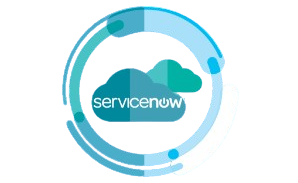Interview questions
- What is ServiceNow, and why is it used?
ServiceNow is a cloud-based IT Service Management (ITSM) platform that helps organizations manage digital workflows for enterprise operations. It is used to streamline processes, improve service delivery, and automate routine tasks. - What is an update set in ServiceNow?
An update set is a group of customizations that can be moved from one ServiceNow instance to another. It tracks changes like forms, fields, business rules, and workflows. - Explain the ServiceNow architecture.
ServiceNow is built on a multi-instance architecture. Each customer gets their own instance that is isolated and independent. It includes components like a web server, application server, and database. - What are the different types of tables in ServiceNow?
Core Tables: Tables provided by ServiceNow (e.g., Incident, Problem).
Custom Tables: Tables created by users to meet specific business needs.
- What is a dictionary override in ServiceNow?
Dictionary override allows you to define different dictionary values for fields in extended tables without altering the parent table’s dictionary definition. - How do you create a new table in ServiceNow?
Navigate to System Definition > Tables, click ‘New’, fill in the required fields like table name and label, and save. - What is a Business Rule in ServiceNow?
A business rule is a server-side script that runs when records are displayed, inserted, updated, or deleted. It helps automate processes and maintain data integrity. - What are ACLs (Access Control Lists) in ServiceNow?
ACLs determine which users can access or modify data in ServiceNow. They are evaluated when attempting to access any record or field. - How is data imported in ServiceNow?
Data is imported using import sets and transform maps. Import sets load data, and transform maps specify how the data should be transformed and inserted. - What is the difference between a UI policy and a Data policy?
UI Policy: Enforces rules on the client side (form view).
Data Policy: Enforces rules on the server side (database level).
- How do you schedule a job in ServiceNow?
Scheduled jobs can be created via System Definition > Scheduled Jobs. Define timing, script, and parameters. - What is a workflow in ServiceNow? How do you create one?
A workflow automates multi-step processes. Create it by navigating to Workflow > Workflow Editor, dragging activities, and connecting them. - Explain the difference between client scripts and business rules.
Client Scripts: Run on the client side (browser).
Business Rules: Run on the server side.
- What are the different types of client scripts in ServiceNow?
OnLoad
OnChange
OnSubmit
OnCellEdit
- How do you enable or disable an application in ServiceNow?
Go to System Applications > Applications, select the app, and toggle the active status. - What is a transform map in ServiceNow?
A transform map is used to define the relationships between fields in an import set and fields in the target table. - Explain the concept of a Reference Qualifier.
A reference qualifier filters the data available for a reference field. It can be simple (static) or advanced (dynamic). - How does ServiceNow handle security at the record level?
Record-level security is handled through ACLs, which specify access rights based on conditions and roles. - What is a GlideRecord in ServiceNow?
GlideRecord is a server-side API used to perform CRUD operations on ServiceNow tables. - How can you integrate ServiceNow with external systems?
Integration can be done via APIs, REST/SOAP web services, or integration tools like IntegrationHub. - How do you optimize performance in ServiceNow?
Minimize client scripts and business rules.
Use async business rules.
Optimize database indexes.
- Explain the difference between asynchronous and synchronous business rules.
Asynchronous: Runs in the background.
Synchronous: Runs before or after database operations.
- How does ServiceNow handle versioning and upgrades?
ServiceNow provides a versioning feature for tracking changes and applying patches. Upgrades are managed through scheduled updates. - What is Domain Separation, and why is it important?
Domain Separation allows multiple clients to coexist on the same instance with separate data and processes. - How do you debug client-side and server-side scripts in ServiceNow?
Client-side: Use browser developer tools and logs.
Server-side: Use server logs and the ServiceNow script debugger.
- What is Event Management in ServiceNow?
Event Management processes events from various sources to identify issues and initiate remediation. - How would you handle a situation where an incident is not resolved within SLA?
Escalate the incident, notify stakeholders, and analyze the SLA breach to prevent recurrence. - What are Scoped Applications in ServiceNow?
Scoped Applications are applications with their own namespace, providing isolation from global applications. - How do you manage and secure sensitive data in ServiceNow?
Use encryption, ACLs, and data masking techniques to protect sensitive data. - Explain CMDB and how it helps in ITSM.
Configuration Management Database (CMDB) stores information about hardware, software, and services, helping track assets and improve service delivery.


